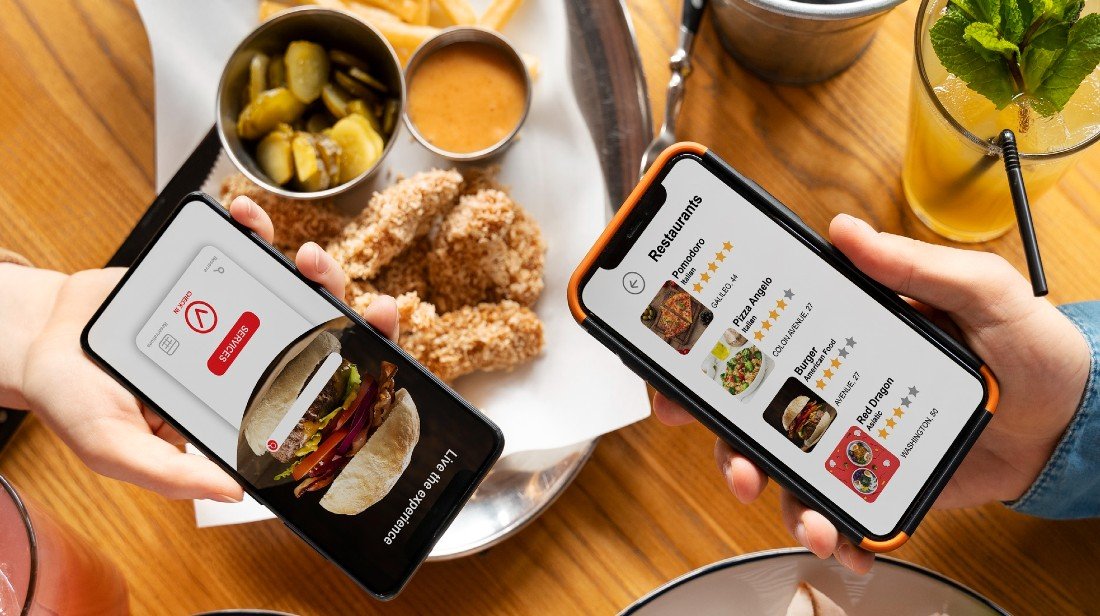
eCommerce sector is growing rapidly, especially post pandemic. More and more businesses are going online to sell their products and increase revenue.
The global eCommerce market size was around USD 10.19 trillion and expected to reach at USD 21.22 trillion by 2030 with CAGR of almost 16% – Source. Facing fierce competition in the sector and to stay ahead in the race, eCommerce brands look for the ways that enhances consumer experience, increase sales, and make their brand popular. Accessing accurate eCommerce data insights related to important use cases can make this possible. In this post we will discuss what are the top eCommerce Data Scraping Use Cases to watch for your eCommerce business growth.
What is eCommerce Data Scraping?
eCommerce data scraping is the process to extract and collect important data insights to analyse for profitable business decision making. With the help of eCommerce data scraping services and tools, brands can acquire data related to products information, real time pricing, reviews, and more. These data help to optimize overall business strategies, better serve consumers, and outrank competition.
Explore More – What is eCommerce Data Scraping – A Complete Guide
Top eCommerce Data Scraping Use Cases
Real-Time Price Monitoring & Dynamic Pricing
Now a days eCommerce shoppers are comparing prices on multiple online stores before making purchase decision. Your business success highly depends on your pricing strategies. Collect real-time pricing data to monitor from competitor platforms, comparison tools, and marketplaces for targeted products. Adjust your prices in automated manner by combining this data with dynamic pricing as per stock level, market demands, and other factors.
Get complete visibility of rival pricing, response swiftly to market dynamics, apply rule based dynamic pricing, optimize profit margins with intact sales, and improve promotion campaigns.
Targeted Advertisement
eCommerce businesses leverage web scraping services to study their audiences. Brands can identify consumer interests and expectations. Data related to demographics, product preferences, and competitor advertisement placements help create and run hyper-targeted advertisement campaigns for higher ROI generation. Syndicate extracted data directly with ad platforms to improve audience segmentation.
Product Research
Acquire product data to identify bestselling products of yours and competitors’ in a particular category. Scraping competitor product listing data help perform product matching to map your catalog against competitor to find out information gaps and new launch opportunities. Match 1 to 1 product SKUs to improve images, descriptions, and know consumer reviews. This process will make your product listing better and assist stand out in the competitive ecommerce landscape.
Customer Sentiment Analysis
Extract customer reviews, ratings, and feedback data from across the marketplace, social media, and various review platforms. This insight helps to understand what consumer is thinking about your and competitor’s product. Analysing consumer reviews and feedback assist to find out product gaps, strength and weaknesses of your products and services. Utilize NLP tools to perform automated sentiment trend analysis from extracted data. Optimize your product and pricing details, introduce new products, lessen the consumer queries, and refine overall shopping experience by utilizing customer sentiment insights.
Lead Generation
Enhance your lead ratio with the help of scraping data related to potential customers. Extract seller information, contact forms, B2B eCommerce platforms to collect data insights that help to compile targeted outreach list for product sales or nurture new partnerships. Identify sector influencers, wholesale buyers, or conduct supplier research to upsurge your business leads. This data would assist eCommerce marketers to plan promotional activities for making personalized approach and enhance conversion ratio.
Logistics, Shipping, and Delivery Insights
Purchase at own convenience is one of the important aspects of eCommerce which inspire the consumers to purchase online. Consumer review and compare stock availability, delivery timeline, shipping details, and other charges before making buying decision. Extract these details from competitors to monitor delivery time, shipping rates, and return policies to optimize and improve product delivery and goods return terms. This process will enhance consumer shopping experience and loyalty.
Assortment and Stock Level Intelligence
Assortment and stock level intelligence comprises extracting and analysing real time data on competitor product offerings and their stock status. This data can be acquired from eCommerce portals, marketplaces, and DTC websites with web scraping tools and APIs. Use these insights to augment your inventory, act quickly while rival goes out of stock, launch new or remove saturated products, and build effective promotion strategies. Stock level intelligence delivers benefits such as mitigate stockouts / overstocking, find white space opportunities, improve conversions, and take data backed decisions.
Marketplace Expansion and Opportunity Sizing
Finding new opportunities for business expansion is vital for eCommerce businesses to scale growth. Scrape and analyse products, pricing, and trends of global marketplaces. This will allow brands to find out untapped demographics or product categories having high demand and low competition. Reveal local demand and regional specific buying behaviour to upscale localization.
MAP (Minimum Advertised Price) Monitoring
In a fiery competitive world of eCommerce, MAP monitoring is crucial to intact brand value and product pricing reliability. Minimum Advertise Price Monitoring is essential aspect for manufacturers, wholesalers, and brand managers who operate with multiple vendors. Collect competitor pricing data to revel similarity on equal products and enforce MAP policy for all resellers. MAP monitoring help build strong retailer relations, reducing pricing confusion, avoid bottom pricing state, and preserve profitability.
Trend and Demand Forecasting
This use case covers scraping and analysing raising product trends, forecasting future consumer demands, and reveal seasonal buying patterns. This data insights assist businesses to predict market swings, track top seller rankings, know popular search queries, research historical data, and understand local demand for particular products. The core benefits of trend and demand forecasting are cleverer product launch, demand base inventory management, maximum revenue generation from seasonal trends, and becoming early market movers.
Coupon and Promotional Tracking
Scrape websites, online marketplaces, and coupon platforms to acquire data related to coupon codes, promotional banners, flash sales, cashback offers, loyalty rewards, and more. This data provides insights of how competitors are promoting their products, both off and online. Key benefits of coupon and promotional tracking are monitor MAP violations, reveal competitor promotions, build your promotion planner, Limit coupon abuse & discount cannibalization, and improve conversion rates.
Content and SEO Optimization
Scrape data related to titles, meta tags, product descriptions, and top keywords from targeted competitors. Utilise these data to optimize product content and keywords improve your products on page SEO and organic visits.
Use Cases to Watch for in Upcoming Time
Sustainability in Product Choices
Now a days consumers become more aware about their purchased product’s sustainability. Scraping data related to sustainability tags, packaging details, and certification sources assists businesses to stay in line with the trend. Extract data insights such as Eco-labels, material composition, certifications, reviews, and carbon footprints to identify gaps and optimize your product details to create loyal customer base.
Hyper-personalization
Consumers love tailored experiences. From personalized product recommendations to dynamic pricing, brands that leverage hyper-personalized content see meaningfully higher engagement and conversions. Scrape data related to customer behaviour, suggestions, and user generated content to build personalized promotion campaigns, create intelligent product recommendations, develop dynamic suggestions, and improve retargeting ads. Along with that, headless commerce solutions can help businesses seamlessly implement these personalized understandings across various touchpoints, enhancing customer satisfaction and loyalty.
Scraping for Social Commerce
Social media platforms are raising as leading forces in online shopping. Buyers find, review, and buy products directly over the social media platforms. Measure consumer interests on social media to improve product recommendations while targeting or re-targeting.
Track influencer posts and their product mentions, analyse social media comments, monitor hashtag trends and viral content, scrape product links embedded in bios or captions, and extract UGC to identify brand advocates and complaints.
These data insights will help to discover winning products, find influencers in your niche, and monitor social buzz related to your products. Adopting social commerce scraping will unlock the unseen sales opportunities rooted in social platforms.
Integration with AI and Machine Learning
Majority of eCommerce brands are adopting advance techniques like artificial intelligence and machine learning to make consumer experience better and scale profit margin. With the use of AI, scraping million of pages with accurate data collection can be done easily. Feeding scraped data into AI ML models can help to derive predictions, make automate decisions, and personalize experiences at scale.
Increased Use for Real-Time Data
In the highly competitive world of eCommerce, speed is the new weapon to win. Real-time data provides information regarding change of consumer interests, market swings, price changes, stock outages, and trending products. These information help businesses to take immediate actions to fulfil customer expectations.
Real time data scraping powers competitor price monitoring, promotion discovery, inventory tracking, dynamic pricing, and alerts on new product launches.
Conclusion
eCommerce web scraping is no longer an option tactic or nice to have aspect, it’s a must have tool to drive business success in 2025 and beyond. The above-mentioned ecommerce data scraping use cases will help you optimize product prices, penetration in new market, outrank competitors, improve consumer experience, and increase profitability.
Are you looking to scale your eCommerce business?
At Dataseeders, we provide eCommerce data scraping services to businesses ranging from startups to enterprises. Tell us your data needs and our experts will strive hard to drive success towards your business.




